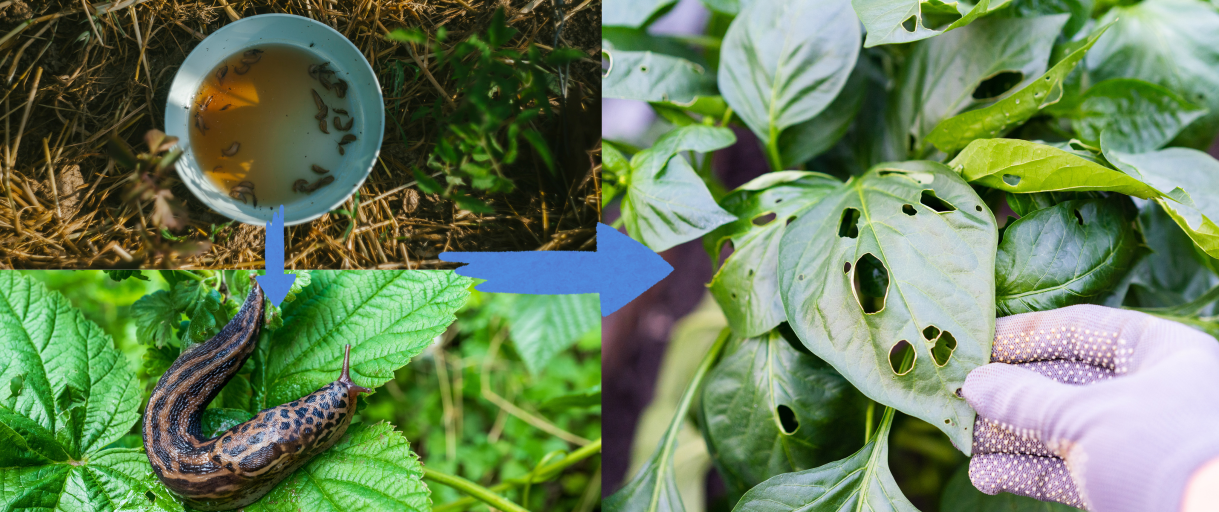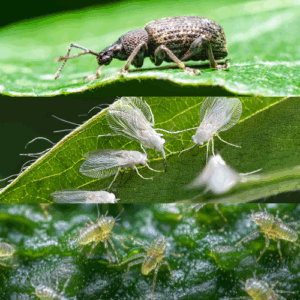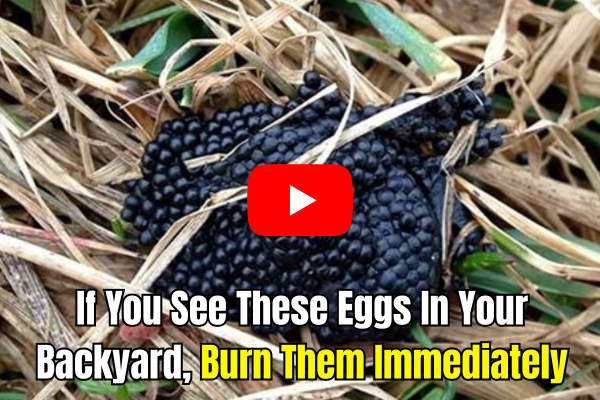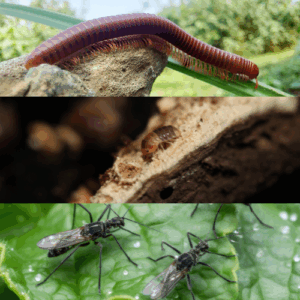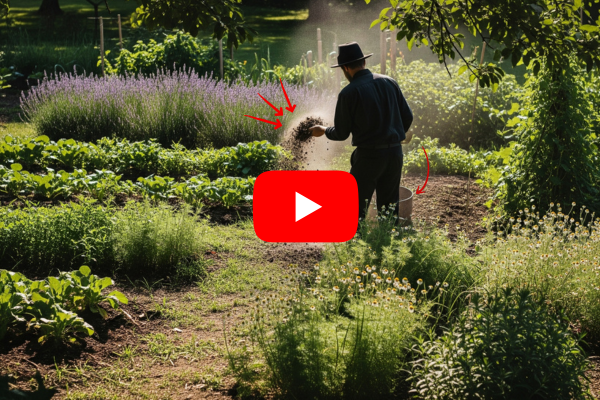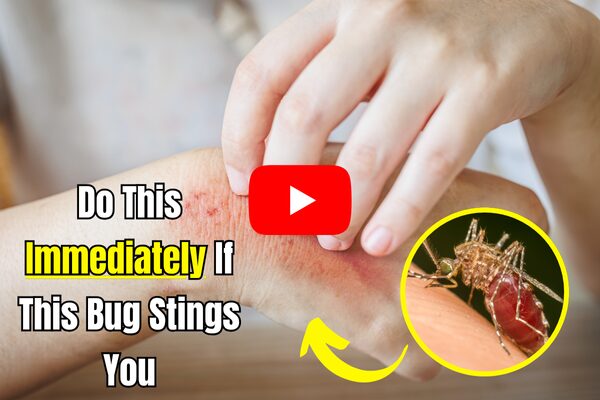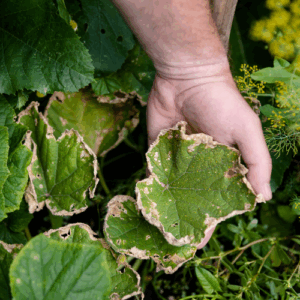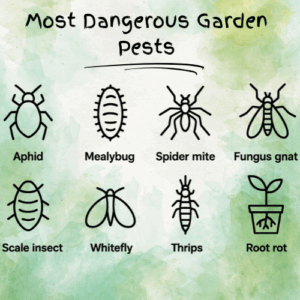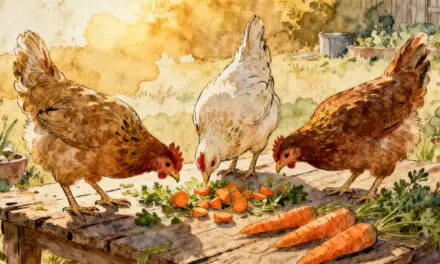Think pests are just part of homestead life? Think again. Many are crashing your garden because you’re rolling out the welcome mat.
Rotting fruit under trees? That’s a five-star feast for rodents.
Damp mulch layers? A luxury hotel for cutworms.
This can’t be ignored.
Let’s dig into the hidden pests you’re accidentally feeding — and how to shut down their free buffet.
Vine Weevils, Whiteflies, and Spider Mites
Vine weevils hide during the day and feast on roots at night.
Their larvae burrow into soil, devouring root systems until plants collapse without warning. Whiteflies cluster on leaf undersides, sucking sap and spreading disease.
A single infested plant can release hundreds of these tiny pests, weakening nearby crops. Spider mites thrive in dry, dusty conditions, spinning webs on stems and leaves while sucking chlorophyll until foliage turns speckled and brittle.
These pests often go unnoticed because they target parts of the plant you rarely inspect—roots, stem bases, or leaf undersides. Over-fertilizing with nitrogen-rich amendments creates tender, juicy growth that attracts sap-suckers.
Overhead watering in dry climates raises humidity just enough for spider mites to multiply. To disrupt them, spray leaves with a strong stream of water in the early morning (this knocks mites and whiteflies off plants).
For vine weevils, spread sticky barriers around pots or apply parasitic nematodes to soil at dusk when adults emerge to feed.
Scale Insects and Mealybugs
Scale insects cling to stems like tiny barnacles, sucking sap and excreting sticky honeydew that attracts ants. Over-fertilizing with phosphorus-heavy blends makes plants juicier targets.
Mealybugs, which look like cottony tufts, thrive in humid corners of greenhouses or overcrowded planters. Both pests multiply when gardeners ignore early signs like shiny leaves or ant trails.
Scrape off scales with a soft brush, or dab mealybugs with a cotton swab dipped in rubbing alcohol. Introduce lacewings—their larvae devour both pests without chemicals.
Watch Out for Ticks
While you’re battling invisible garden pests, a far deadlier threat could be lurking just outside your beds. Ticks don’t just nibble. They embed themselves, feeding on your blood and carrying diseases like Lyme, Rocky Mountain spotted fever, and other illnesses that can cripple your family and livestock for months or even years.
They thrive in tall grass, leaf piles, and brush near your garden—places you might overlook while focusing on plant care. Ignoring ticks isn’t just risky; it’s a gamble with your health.
Keep grass trimmed, remove leaf litter, and plant tick-repelling herbs like lavender, rosemary, and garlic around your homestead to protect yourself and your animals from these silent predators.
Root Maggots and Wireworms
Root maggots target carrots, radishes, and onions, burrowing into roots and leaving tunnels filled with rot. They’re drawn to decomposing organic matter left near crops, like forgotten carrot tops or onion skins.
Wireworms, orange-brown larvae that chew through potatoes and beets, thrive in unturned soil or fields transitioning from grass to crops.
To starve them, clear crop debris immediately after harvest and till soil in fall to expose larvae to predators. Plant mustard greens as a trap crop—their roots repel wireworms while attracting ground beetles that prey on them.
Millipedes, Sow Bugs, and Fungus Gnats
Compost piles are essential for healthy soil, but too much moisture turns them into pest condos. Millipedes and sow bugs thrive in soggy compost, munching on decomposing matter.
While harmless outdoors, they’ll invade seedlings if the pile sits too close to your garden. Fungus gnats—tiny black flies—lay eggs in damp compost, and their larvae attack plant roots.
Citrus peels left on the surface attract fruit fly relatives. Bury citrus scraps at least six inches deep to avoid luring them in.
Thick straw mulch seems like a good idea until earwigs emerge at night, chewing seedlings to shreds. Cutworms, which slice through stems like tiny saws, also hide in mulch layers.
Alternating straw with gravel paths disrupts pest hiding spots and reduces moisture retention. Sprinkling cinnamon on mulch can deter pests—its natural compounds disrupt insect trails without chemicals.
You don’t need high-tech gadgets or harsh sprays to outsmart garden pests. The Amish have been doing it for generations, with nothing but simple habit and smart planting.
Eddie Swartzentruber was born and raised in one of the strictest Old Order Amish communities. He grew up without even battery-powered lights, but he learned how to keep pests, disease, and waste at bay using methods passed down through centuries.
Now that he’s left the community, Eddie has decided to share that knowledge, before it fades away. From natural pest deterrents to food preservation and home remedies, he’s revealing the exact techniques his people rely on to live close to the land, with little waste and even less reliance on store-bought solutions.
This isn’t second-hand research. It’s real-life wisdom from someone who’s lived it. And for the first time ever, you can look inside his world.
👉 Click here to see what’s inside the book and learn how the Amish tackle pests and plenty more, without chemicals or clutter. Limited edition only.
Damp Soil is a Pest Nursery
Overwatering creates ideal conditions for root aphids and springtails—pests that attack plants long before visible damage appears.
Root aphids cling to roots, draining nutrients and stunting growth, while springtails swarm in damp soil, signaling excess moisture.
To avoid soggy soil, use a terracotta pot as a moisture gauge: bury it near plants, fill it with water, and check the surrounding soil. If damp, delay watering; if dry, refill the pot. This method prevents overwatering and starves pests of their habitat.
Drip trays under potted plants and decorative birdbaths near gardens often harbor stagnant water, attracting mosquitoes and thrips. Thrips scar leaves and spread viruses, while mosquitoes lay eggs in standing water.
Replace stagnant water daily in birdbaths, or add mosquito dunks—a bacterial treatment safe for wildlife—to kill larvae. For larger water features, install solar-powered pumps to keep water moving and deter pests.
Now Let’s Talk Bug Bites
Pests don’t just feast on your plants. They can bite you, your family, and livestock too. Some of these tiny troublemakers are out for your blood, and can seriously threaten the health of your family and animals.
- Mosquitoes lurking in that forgotten puddle don’t just leave itchy bumps. They can carry diseases like West Nile virus or Eastern Equine Encephalitis, potentially deadly for people and livestock.
- Ticks aren’t just creepy crawlers. They hide in tall grass and brush, waiting to latch onto you and spread Lyme disease, Rocky Mountain spotted fever, or worse.
- Fleas and chiggers don’t just cause unbearable itching—they can transmit parasites and bacterial infections that take weeks to clear.
Ignoring these biting pests is a risk you don’t want to take. Their bites can lead to infections, allergic reactions, or illnesses that are harder to treat than a slug-chewed lettuce.
Protect yourself by keeping your yard tidy and free of tall grass or leaf piles, wearing protective clothing during peak pest hours, and using natural repellents like citronella or neem oil.
Taking these precautions isn’t just about comfort—it’s about keeping your homestead safe from hidden dangers that start with a single bite.
Crops That Lure Unwanted Guests
Nasturtiums are praised as companion plants for repelling aphids, but overgrown vines become magnets for cabbage moths.
These pests lay eggs on leaves, and their larvae devour both nasturtiums and nearby crops like kale. Prune flowers weekly to control growth and plant dill nearby—its strong scent confuses cabbage moths, making it harder for them to target host plants.
Fruit trees also pose risks when overripe fruit drops and rots. Rotting apples or berries emit ethanol, attracting wasps and rodents. Remove fallen fruit within 48 hours to disrupt this cycle.
For persistent wasps, set traps using apple cider vinegar, sugar, and dish soap in a jar. The mixture lures them in, and the soap traps them without toxic chemicals.
So grab a shovel, tweak one habit this week, and watch what happens. Your garden’s worst threats often start with the best intentions—but they end with you.
Companion Planting: Your Secret Weapon
Some plants do more than just grow well together—they team up to repel pests. Basil near tomatoes can drive away whiteflies and hornworms, while marigolds planted among beans and squash deter nematodes and aphids with their strong scent and root excretions.
Even trap crops like radishes can draw flea beetles away from tender greens, offering a sacrificial target. Try pairing chives with carrots, or thyme with cabbage, to throw pests off their game.
Thoughtful combinations not only reduce infestations but improve pollination and flavor—nature’s way of saying thanks.
👨🌾The Amish have mastered this natural pest control approach. One of their best-known techniques is the “Three Sisters” method: planting corn, beans, and squash together. While it’s often praised for boosting yields, it also plays a big role in pest defense. The dense squash leaves shield the soil, discouraging weeds and moisture-loving pests. Beans improve soil health, making plants more resilient, and the layered structure creates fewer hiding spots for bugs that thrive in bare or exposed beds.
🌾By using similar strategies, you can reduce infestations without resorting to sprays or traps. Eddie Swartzentruber, a former Amish member, shares how he used these time-tested planting combinations to keep pests in check, naturally. You can learn more about his methods here.
Homestead Habits You Didn’t Know Were Pest Invitations
Open feed bags stored near gardens act like neon signs for pests. Grain moths lay eggs in crevices, and mice gnaw through corners to feast on grains. Switch to airtight bins and add bay leaves—their natural oils repel moths without harming livestock.
Porch lights with white bulbs attract swarms of moths and beetles, which disrupt garden ecosystems by luring predators like spiders.
Replace white bulbs with yellow LEDs, which emit wavelengths less visible to insects. For security, opt for motion-sensor lights or solar-powered options that minimize all-night glare while deterring pests.
Solutions
Slugs devouring lettuce?
Bury a shallow dish of beer near your beds—they’ll crawl in and drown.
For fungus gnats, mix apple cider vinegar, sugar, and dish soap in a jar.
The yeast attracts them, and the soap traps them. To tackle wireworms (orange pests that tunnel into root crops), bury raw potato slices overnight. The pests flock to the spuds, which you can discard in the morning.
Encourage natural predators like parasitic wasps and ground beetles. Plant yarrow to attract wasps that prey on pests, and leave small brush piles or rocks to shelter ground beetles. These beetles hunt slug eggs and cutworms, reducing infestations without chemicals.
Several medicinal herbs are also valuable for their pest-repelling properties as they are for their healing uses. Growing them alongside your crops not only supports a more balanced ecosystem, but it also means fewer chemicals and fewer problems.
If you’re looking to add these kinds of plants to your garden, you can try out this Medicinal Garden Kit that makes it easy. It includes non-GMO, heirloom varieties like:
🌺California Poppy: Its strong scent can deter aphids and leafhoppers while attracting beneficial insects.
🌱Yarrow: Repels beetles and ants, while drawing in ladybugs and lacewings that feed on pests.
🌼Echinacea: It attracts pollinators and parasitic wasps that help keep pest populations in check.
🏵️Calendula: Naturally deters nematodes and aphids and helps confuse whiteflies with its bright blooms.
🌿Chamomile: Deters mosquitoes and flies, and improves the health of neighboring plants.
🪴Marshmallow: Acts as a trap crop for pests like flea beetles, drawing them away from more vulnerable plants.
🌾Chicory: Its bitter compounds repel certain insects and it improves soil structure for plant health.
🍃Evening Primrose: Can deter some moth species and acts as a companion plant to reduce pest stress on nearby crops.
Planting a mix like this doesn’t just help repel pests. It strengthens your whole garden ecosystem, naturally.
Diatomaceous earth (DE), a powdery fossilized algae, slices through soft pests like slugs and aphids but spares earthworms. Apply it dry around plant bases and reapply after rain.
For grubs, use beneficial nematodes—microscopic worms that hunt soil pests. They’re safe for plants and can wipe out grub populations in weeks.
Break the Cycle
Pests aren’t finding your garden—they’re following your habits, so break the cycle.
By cutting off their free meals, your soil stays richer, pollinators thrive, and pests shrink to manageable levels.
10 Killer Trees You Should Never Have In Your Backyard (Video)
Deterring Unwanted Pests with Lemon and Baking Soda
Plant These To Keep The Pests Away
Stop Making These Dangerous Pest Control Mistakes

